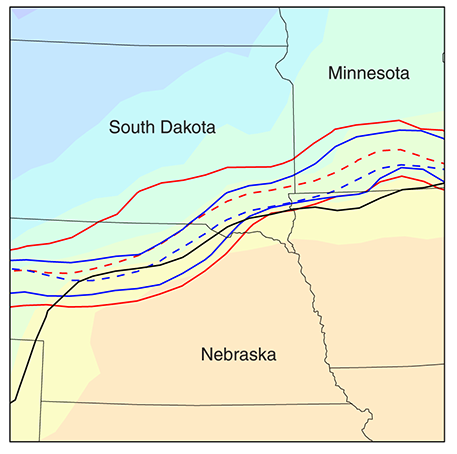Data Assimilation Methods for Dense Mesoscale Observations
Ongoing work at NCAR and the University of WashingtonResearch Overview
Many of our current data assimilation methods in meteorology have been designed to improve synoptic-scale prediction. As our operational numerical weather models increasingly move towards frequently-updating, convection-allowing ensembles, new data assimilation methods need to be developed to address growing issues:- The increase in sampling error from having too few ensemble members to properly sample discrete, meso- to convective-scale features
- The impact of model error on the effectiveness of assimilation with short update cycles
- Considering the role of parameterization schemes more explicitly during the assimilation process
- How to efficiently maximize the integration of observations from ever densifying, ever diversifying platforms into our forecast systems
Ensemble Forecast Adjustment
I tested an alternative method for rapidly updating ensemble forecasts as soon as observations become available. Called "Ensemble Forecast Adjustment" (EFA), this method uses the statistics of the ensemble forecast to take adjustments made by incoming observations and projecting them out into the forecast. In an ensemble context, this not only updates the ensemble mean forecast, but also the ensemble spread, so uncertainty in the forecast is updates as well. The image above shows an example of this technique applied at one point. As new observations of temperature become available (black dots), they are assimilated into the existing ensemble temperature forecast (blue line). The ensemble statistics are used to propagate these adjustments into the forecast, resulting in an "updated" forecast trajector with reduced uncertainty (green line).We tested this for 3-months of 24-hour forecasts in the ECMWF and CMC ensemble systems in 2014, using surface pressure and 2-m temperature observations to update the forecast trajectory. The figure on the left shows how this technique was able to reduce forecast errors out to 6-24 hours, without ever having to re-run the ensemble.

